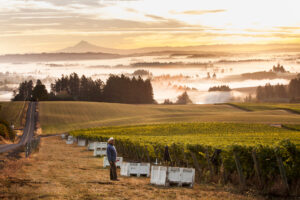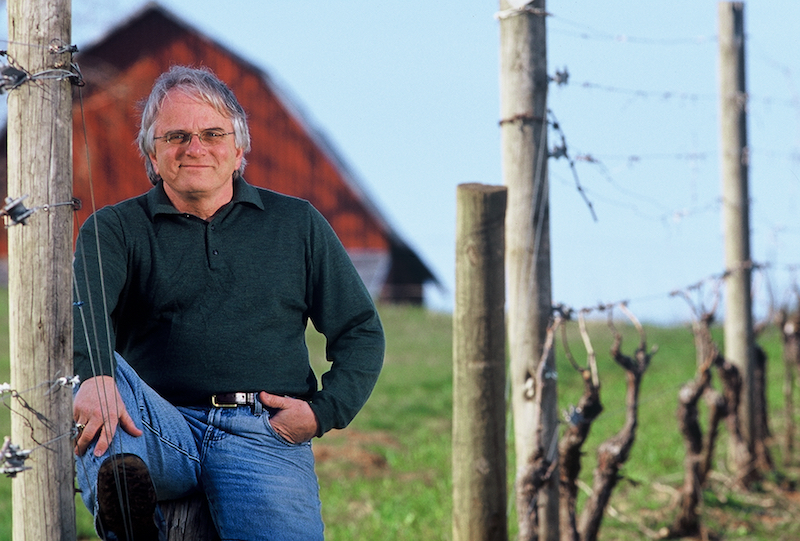
Today the Willamette Valley became only the second American wine region to receive Protected Geographical Indication (PGI) Status in the European Union.
It’s a major breakthrough in global brand awareness and a milestone for the Valley’s many hardworking winegrowers and winemakers. The PGI system protects iconic names of agricultural products, spirit drinks, and wines with a link to their geographical origin, including well-known products such as Champagne and Barolo. Only two American wine regions, Napa Valley and now the Willamette Valley, carry this distinction.
EU recognition requires a detailed description of the unique location, inputs to processes, and resultant qualities of wines to gain PGI status. This recognition further extends the reach of the Willamette Valley and its acclaimed wines across the Atlantic, and throughout the EU.
Outlining the benefits and responsibilities attached to today’s registration, European Union Ambassador to the United States Stavros Lambrinidis said, “For the EU consumer, the PGI is the guarantee of authenticity: that every bottle meets the quality standard set by the Willamette producers.” Geographical Indications are the cornerstone of EU quality wines and spirits and of agricultural products and foodstuffs.
The Willamette Valley Wineries Association (WVWA) and other Oregon statewide organizations, with leadership from Harry Peterson-Nedry, have been advocating for wine region name protection for almost two decades. Peterson-Nedry, the Willamette Valley’s RR and Ridgecrest Wineries founder, started pushing for the protection of wine region names back in 2002.

Harry Peterson-Nedry / Photo by Basil Childers
“I felt labeling and place name protection were principled tenets of what Oregon has always been and should be,” Peterson-Nedry said. “It offered recognition for the pioneers’ priorities and principles, and for the ongoing desire to do the right thing for consumers. The reality is that some wine producers could unfairly appropriate the hard historical work put in by others, by using their wine region names and cheating long-term both the wine industry and consumers.”
“PGI recognition is a remarkable achievement for a relatively young wine region,” said Morgen McLaughlin, executive director of the WVWA. “The Willamette Valley’s first vines were planted in 1965 and since then several generations of growers and vintners have put their imprint on the world wine map.” Today, the Valley is world-renowned for its wines and regarded as a top destination for wine enthusiasts.
“The global wine industry is built on distinct regional names such as Willamette Valley, and this decision is an acknowledgment that location truly does matter when it comes to wine,” said Jennifer Hall, director of the Wine Origins Alliance. “Consumers around the world deserve truthful and accurate wine labels, and this is a major step forward for not only Willamette Valley but the whole wine industry in ensuring consumers are not misled.”